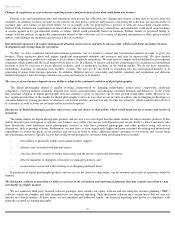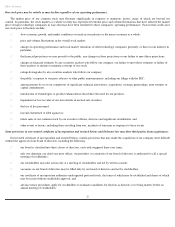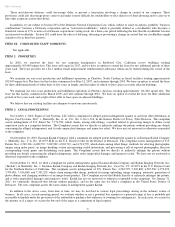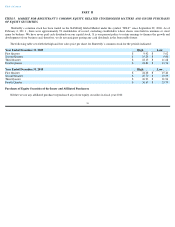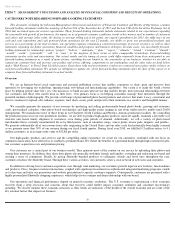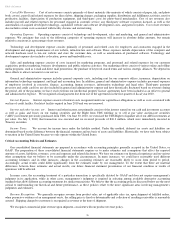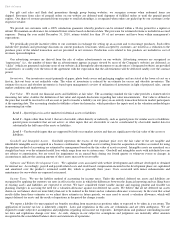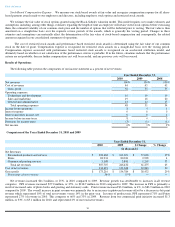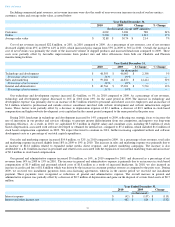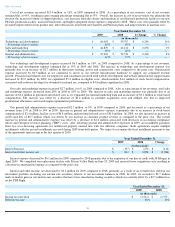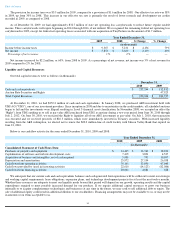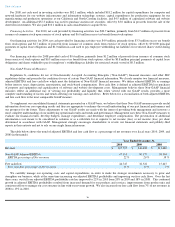Shutterfly 2011 Annual Report Download - page 33
Download and view the complete annual report
Please find page 33 of the 2011 Shutterfly annual report below. You can navigate through the pages in the report by either clicking on the pages listed below, or by using the keyword search tool below to find specific information within the annual report.
For gift card sales and flash deal promotions through group buying websites, we recognize revenue when redeemed items are
shipped. Revenues from sales of prepaid orders on our website are deferred until shipment of fulfilled orders or until the prepaid period
expires. Our share of revenue generated from our print to retail relationships, is recognized when orders are picked up by our customers at the
respective retailer.
We provide our customers with a 100% satisfaction guarantee whereby products can be returned within a 30-
day period for a reprint or
refund. We maintain an allowance for estimated future returns based on historical data. The provision for estimated returns is included in accrued
expenses. During the year ended December 31, 2010, returns totaled less than 1% of net revenues and have been within management’
s
expectations.
We periodically provide incentive offers to our customers in exchange for setting up an account and to encourage purchases. Such offers
include free products and percentage discounts on current purchases. Discounts, when accepted by customers, are treated as a reduction to the
purchase price of the related transaction and are presented in net revenues. Production costs related to free products are included in cost of
revenues upon redemption.
Our advertising revenues are derived from the sale of online advertisements on our website. Advertising revenues are recognized as
“impressions” (
i.e., the number of times that an advertisement appears in pages viewed by users of the Company's website) are delivered; as
“clicks” (which are generated each time users of our website click through the advertisements to an advertiser’
s designated website) are provided
to advertisers; or ratably over the term of the agreement with the expectation that the advertisement will be delivered ratably over the contract
period.
Inventories.
Our inventories consist primarily of paper, photo book covers and packaging supplies and are stated at the lower of cost on a
first-in, first-
out basis or net realizable value. The value of inventories is reduced by an estimate for excess and obsolete inventories. The
estimate for excess and obsolete inventories is based upon management’
s review of utilization of inventories in light of projected sales, current
market conditions and market trends.
Fair Value
. We record our financial assets and liabilities at fair value. The accounting standard for fair value provides a framework for
measuring fair value, clarifies the definition of fair value and expands disclosures regarding fair value measurements. Fair value is defined as
the price that would be received to sell an asset or paid to transfer a liability (an exit price) in an orderly transaction between market participants
at the reporting date. The accounting standard establishes a three-
tier hierarchy, which prioritizes the inputs used in the valuation methodologies
in measuring fair value:
Level 1 – Quoted prices in active markets for identical assets or liabilities
Level 2 –
Inputs other than Level 1 that are observable, either directly or indirectly, such as quoted prices for similar assets or liabilities;
quoted prices in markets that are not active; or other inputs that are observable or can be corroborated by observable market data for
substantially the full term of the assets or liabilities.
Level 3 – Unobservable inputs that are supported by little or no market activity and that are significant to the fair value of the assets or
liabilities.
Goodwill and Intangible Assets.
Goodwill represents the excess of the purchase price over the fair value of the net tangible and
identifiable intangible assets acquired in a business combination. Intangible assets resulting from the acquisition of entities accounted for using
the purchase method of accounting are estimated by management based on the fair value of assets received. Intangible assets are amortized on a
straight-
line basis over the estimated useful lives which range from one to sixteen years. Goodwill and intangibles assets with indefinite lives are
not subject to amortization, but are tested for impairment on an annual basis during our fourth quarter or whenever events or changes in
circumstances indicate the carrying amount of these assets may not be recoverable.
Software and Website Development Costs.
We capitalize costs associated with website development and software developed or obtained
for internal use. Accordingly, payroll and payroll-related costs and stock-
based compensation incurred in the development phase are capitalized
and amortized over the product’
s estimated useful life, which is generally three years. Costs associated with minor enhancements and
maintenance for our website are expensed as incurred.
Income Taxes.
We use the liability method of accounting for income taxes. Under this method, deferred tax assets and liabilities are
recognized by applying the statutory tax rates in effect in the years in which the differences between the financial reporting and tax filing bases
of existing assets and liabilities are expected to reverse. We have considered future taxable income and ongoing prudent and feasible tax
planning strategies in assessing the need for a valuation allowance against our deferred tax assets. We believe that all net deferred tax assets
shown on our balance sheet are more likely than not to be realized in the future and no valuation allowance is necessary. In the event that actual
results differ from those estimates or we adjust those estimates in future periods, we may need to record a valuation allowance, which will
impact deferred tax assets and the results of operations in the period the change is made.
We report a liability for unrecognized tax benefits resulting from uncertain tax positions taken or expected to be taken in a tax return. The
application of income tax law is inherently complex. Laws and regulations in this area are voluminous and are often ambiguous. We are
required to make subjective assumptions and judgments regarding our income tax exposures. Interpretations and guidance surrounding income
tax laws and regulations change over time. As such, changes in our subjective assumptions and judgments can materially affect amounts
recognized in the consolidated balance sheets and statements of operations.
Table of Contents



